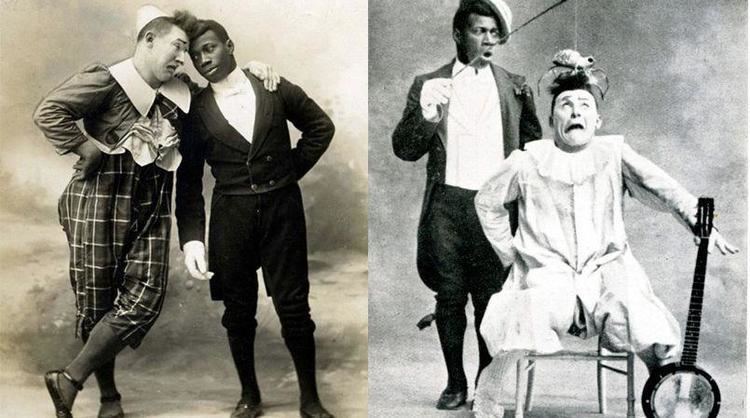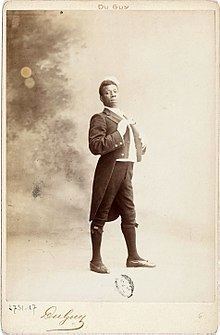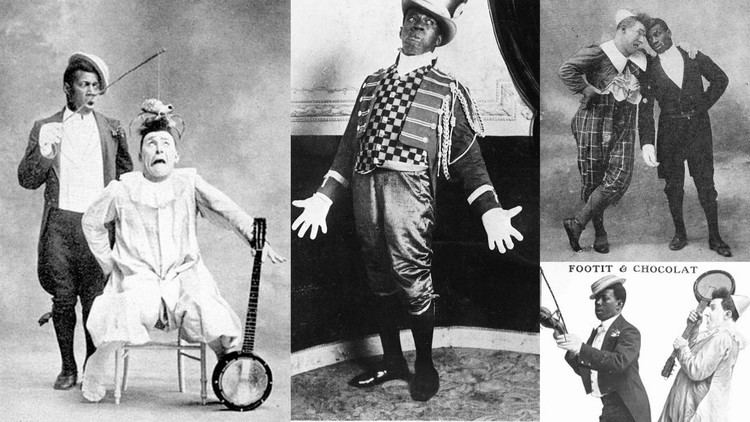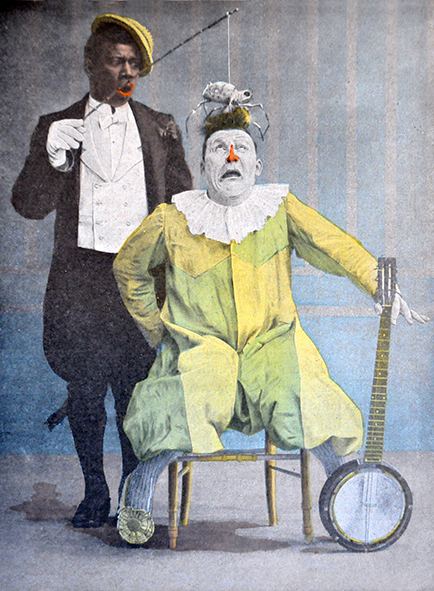Other names Chocolat | ||
 | ||
Similar George Foottit, James Thiérrée, Roschdy Zem, Gérard Noiriel, Omar Sy | ||
Chocolat was the stage name of Rafael, a clown who performed in a Paris circus around the turn of the 20th century. Rafael was of Afro-Cuban descent and was one of the earliest successful black entertainers in modern France. He was the first black clown to play a lead role in a circus pantomime act, and with his longtime partner George Foottit they revolutionized the art of clowning by pairing the sophisticated white clown with the foolish auguste clown.
Contents

Early life

Rafael was born is Cuba sometime between 1865 and 1869. He was likely born a slave, which would explain why his birth was not registered. If so, he was probably born before September 17, 1869, because in 1870 the Spanish government emancipated all slaves born from that date onwards (see the Moret Law). He was born without a surname; "Padilla" was but one of several he would adopt later in life. Rafael had no memory of his biological parents. He was raised by a poor black woman in the slums of Havana. When Rafael was still a boy, she sold him to a Spanish businessman named Patricio Castaño Capetillo for 18 ounces of gold.

Castaño brought Rafael to his family's household in the village of Sopuerta in northern Spain. Cuba had banned the slave trade in 1862, and under international law Rafael technically ceased to be a slave at all the moment he set foot on European soil, but nonetheless the Castaños treated him like one. The Castaños, like many Spaniards with colonial connections, were anti-abolitionists and flouted the law by declaring Rafael a "servant". Rafael was the only black person in the village, and was mistreated both by the Castaños and the villagers. They made him sleep in the stables, and gave him no education.

At around the age of 14 or 15, Rafael fled the Castaños. He worked in the quarries of the Basque Country, then moved to Bilbao where he worked odd jobs, such as dockworker, then as a porter at the train station. In Bilbao he met Tony Grice, a travelling English clown, who hired him as an assistant and domestic servant. Grice would occasionally incorporate Rafael into his acts, such as in his parodies of American minstrel shows, but didn't make Rafael an apprentice. Rafael did not enjoy this life: on several occasions he deserted Grice, then returned when he could not find employment elsewhere.
Debut
The famous Auguste Tony Grice discovered Rafael working the docks of Bilbao, impressed by both his physical strength and his dancing. He hired him as his manservant and handyman and then made him his partner in some of his numbers, in which Rafael would act as a stuntman.
The new duo would go on to public notoriety when they began performing with the New Circus of Joseph Oller in Paris during October 1886. Rafael's stage name of Chocolat was given to him at this time by Grice. In 1888, their partnership was ended when Henri Agoust, the manager of the New Circus hired Chocolat as the star of a nautical pantomime. He saw Chocolat as an potential star dancer and mime, and was proven correct when his first show, "The Wedding of Chocolat" was a huge success.
The show grew over the next five years, including teaming up with the clowns Pierantoni, Kestern and Geronimo Medrano. During this period he met the love of his life, Marie Hecquet; she was married with two children, but divorced her husband in 1895 to start a new life with Rafael. He raised her children Eugene and Suzanne as their own and the family became circus performers.
Foottit and Chocolat
In 1895, Raoul Donval, director of the New Circus, formed a new duo, teaming Chocolat with a British clown, George Foottit. The two performed together for twenty years, popularizing clown comedy, especially with the burlesque sketch William Tell. Both were very successful in forming a comic duet between a white clown authoritarian and Auguste black drudge, who by his bewilderment enforced racism but did not prevent the audience from laughing at his excesses nor from admiring his athletic agility.
This comedy relied heavily on "comedic slaps", making Chocolat a character consistent with the imagery and prejudices of that time; a character that gradually becomes the stereotype of the Negro scapegoat: silly, childish and friendly. Chocolat, however, fought the stereotype by constantly diversifying his skills and careful observation of the skits shows a character not confined to the roles of the subject. The phrase "je suis Chocolat", meaning "I am deceived", was popularized by the dialogues in their sketches, introduced by the duo in 1901.
In 1905, their New Circus contract was not renewed. Some blamed the Dreyfus affair and politicization of racial issues. There were also questions at the time of black and Mestizo politicians representing the old colonies of the French empire. Their joint career reached its peak with the Folies Bergère until they were considered old fashioned with the arrival of a generation of American black artists bringing the cake walk to the stages of Europe.
In 1909, they returned to the New Circus with Chocolat, aviateur d'Henry Moreau. The first performance on October 30 was well received by the public. On November 19, in an article by writer and journalist Pierre Mille, the Times erroneously announced the death of Chocolat. The next day, the Times retracted the error and published a letter from Rafael, curiously dated November 17:
Sir,
The director read in your newspaper that Mr. Mille, the intelligent journalist wrote that I am dead like Augustus.
I pray you, say that I am alive, and that I am playing every night in Chocolat aviateur at the New Circus.
You can judge that I did not even turn white.
Please accept my respect,
Chocolat
Foottit and Chocolat split up in 1910, when Andre Antoine, director of the Odeon, hired Foottit to play the role of the Clown in Romeo and Juliet. They announced their separation on stage:
Foottit: "I go to play Romeo at the Odeon!"
Chocolat: "So? I'm playing Othello at the Comédie-Française!"
